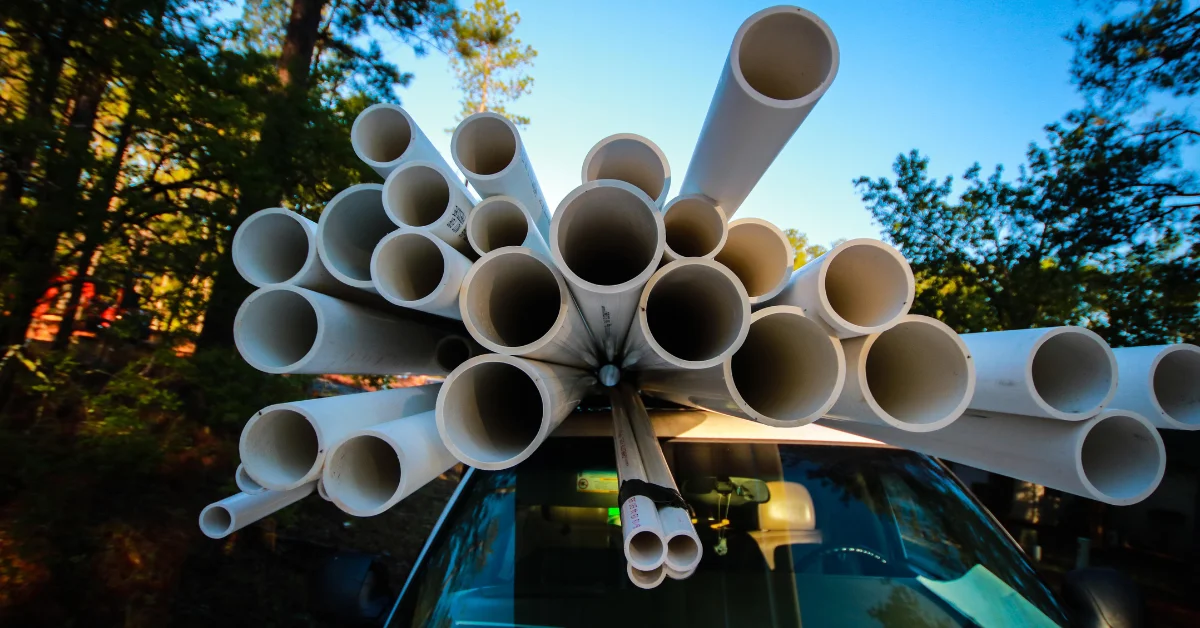Why PVC Pipes Are the Backbone of Modern Plumbing

PVC pipes have pretty much taken over residential and commercial plumbing systems here in the States. These polyvinyl chloride pipes just work better than the old-school materials like cast iron, galvanized steel, and copper – plus they’ll save you about 40-60% on installation costs compared to metal pipes.
If you’re thinking about a plumbing project or dealing with problems in your current setup, knowing what makes PVC pipes special will help you make smart choices about your home’s plumbing. Most local building codes have given PVC the green light for both water supply and drainage, so it’s become the go-to option for new builds and replacements.
From Metal to Modern: How PVC Revolutionized Plumbing
The old plumbing materials were honestly a pain to deal with. Cast iron pipes would start rusting and leaking after 25-50 years, every single time.
Galvanized steel was even worse – minerals would build up inside and choke off your water pressure while making your water taste funky. Copper lasted longer, sure, but you needed a skilled plumber who knew how to solder properly, and it cost three to five times more than what you can get today.
Then PVC showed up in the 1960s and changed everything for homeowners. No more rust, no more nasty water, and these things can keep working for 50-100 years without breaking a sweat.
Installation got way cheaper because PVC is so much lighter and easier to work with than metal pipes. Now building inspectors everywhere recognize PVC as a solid choice for getting water in and waste out of your home.
What Makes PVC Pipes the Go-To Choice?
PVC pipes have three big things going for them that make a real difference in how your plumbing performs long-term. They won’t rust like metal pipes, they work well with regular home water pressure, and after installation you rarely need to worry about them.
Strength Without the Rust Factor
Here’s the thing about PVC – it’s chemically inert, which means it doesn’t react with water or household chemicals at all. Your water stays clean because PVC won’t start flaking off metal bits or developing rust that turns your water brown and clogs up your faucets.
While metal pipes slowly get narrower as rust builds up inside them, PVC keeps its full size the whole time, so your water pressure stays strong.
Regular PVC pipes can handle water pressures up to 200-315 PSI, which is way more than your house needs since most homes run between 40-60 PSI. They work fine in temperatures from freezing up to 140°F, covering everything from cold water lines to your standard water heater output.
This means you won’t be dealing with gradual failures that cost you big repair bills every decade or so. When you’re ready to purchase PVC pipes online, make sure to click site listings that show pressure ratings and temperature specifications to get the right pipes for your specific project.
Lightweight Yet Built for Heavy Work
PVC pipes weigh about 85% less than cast iron – you’re looking at 5 pounds for a 10-foot section of 4-inch PVC versus 40 pounds for the same size in cast iron. That’s a huge difference when you’re actually installing the stuff, and it means one person can handle jobs that used to need a whole crew.
But don’t think lightweight means weak. PVC meets all the industry standards for pressure and impact resistance. It can handle the ground settling and shifting around it without cracking, which is why it works so well for underground installations.
When PVC does get stressed, it flexes instead of just snapping, so you’ll get some warning if there’s a problem developing.
Where PVC Pipes Keep the Water Flowing
PVC handles multiple jobs in your plumbing system. It’s perfect for cold water supply lines, all your drainage, vent stacks, and the underground sewer connections. Most building codes are fine with PVC for these applications, though some places still want copper for hot water lines.
For drainage, PVC’s smooth inside surface keeps waste from sticking and building up the way it does in cast iron pipes. It also stands up to tree roots and soil chemicals that destroy other pipe materials.
This is the feature that other types of pipes might not have. When you bury PVC underground, it typically runs for 75-100 years without needing replacement – that’s compared to 50-75 years for copper and just 25-50 years for cast iron.
PVC and the Future of Plumbing Innovation
The PVC industry keeps improving their products for your benefit. Right now, you can get PVC pipes with better flexibility for earthquake zones, UV protection for exposed installations, and special formulations for different water chemistry situations. These improvements make PVC last even longer and work in more situations than before.
Smart home technology is starting to work with PVC too. Some pipes now accommodate leak sensors and water quality monitors that can text you when something’s wrong, potentially saving you thousands in water damage.
There are even experimental PVC formulations that change color when they’re exposed to certain chemicals, giving you a visual heads-up about leaks.
In the End
PVC pipes just make sense – they work reliably, cost less than traditional materials, and solve the corrosion headaches that plague metal pipes for 50-100 years. Their history shows how reliable they are, and they’ve shown they can deal with any challenge your house creates.
If you’re constructing fresh or swapping out old plumbing, PVC offers the most value for your money regarding how well it works and how long it lasts. With all the new innovations coming down the pipeline, PVC is only getting better at being the reliable backbone that keeps your plumbing systems running smoothly.
